In pictures: The Korean War
- Published
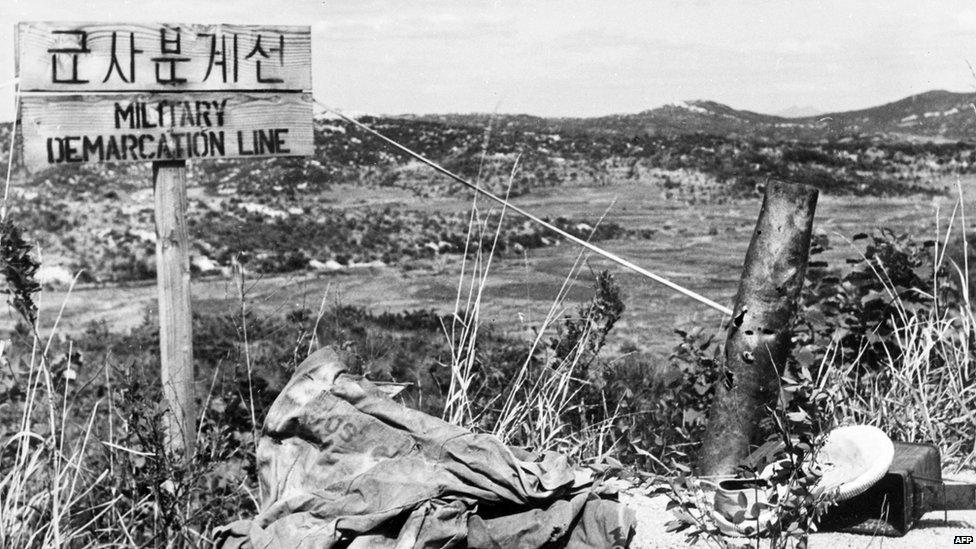
In June 1950, as the international community was coming to terms with the aftermath of World War II, a new conflict broke out on the Korean peninsula - and the Cold War turned hot for the first time.
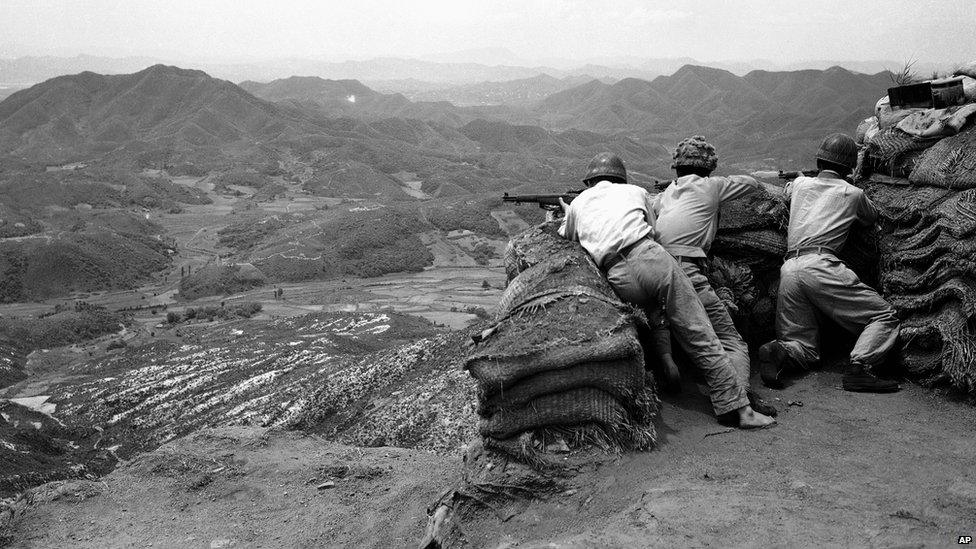
North Korean communist forces moved south, crossing the 38th parallel military demarcation line agreed in 1945. South Korea, the US, Britain and their allies fought back.
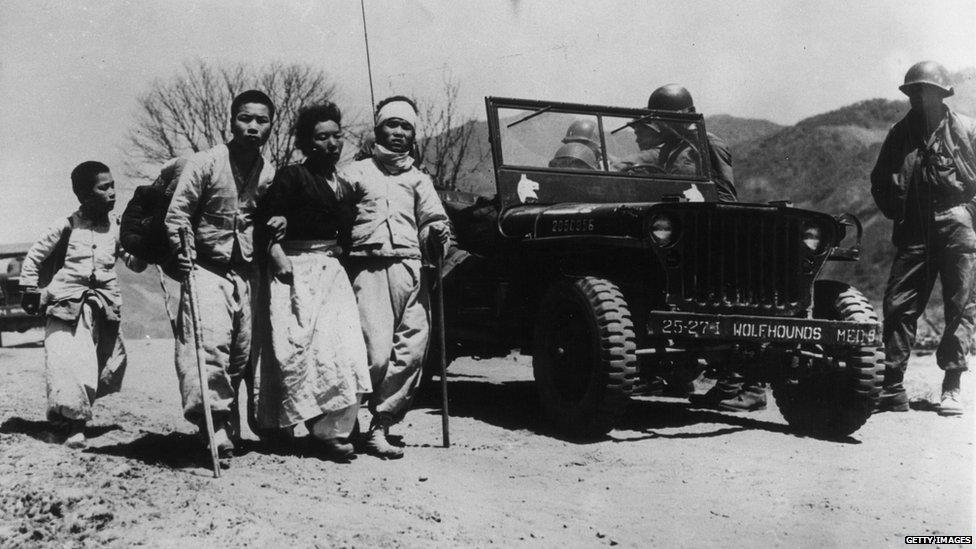
Estimates vary, but at least two million Korean civilians, up to 1.5 million communist troops, and around 30,000 US, 400,000 South Korean and 1,000 UK troops are believed to have died.
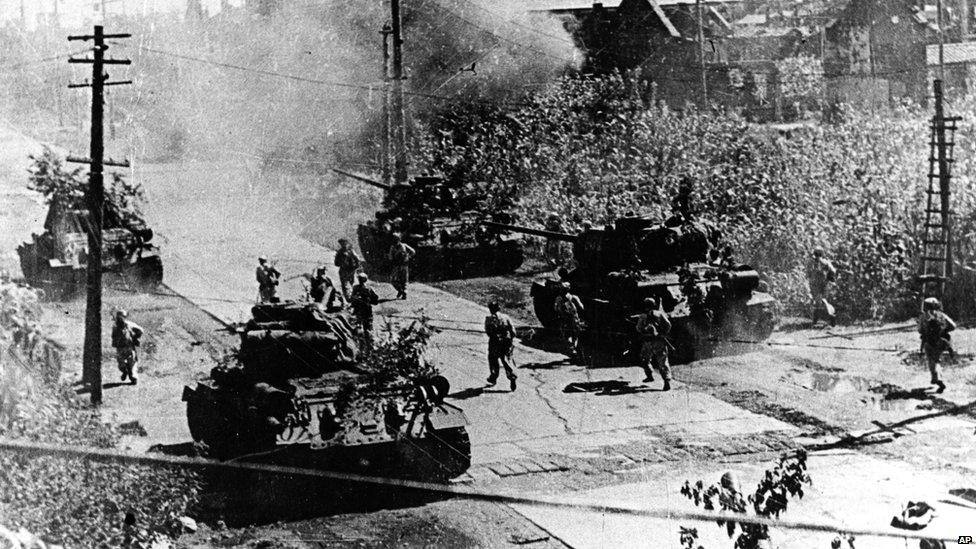
China, Japan and the Soviet Union had all jostled for influence over the Korean peninsula for years. Japan went on to formally colonise Korea in 1910 and ruled it until the end of World War II.
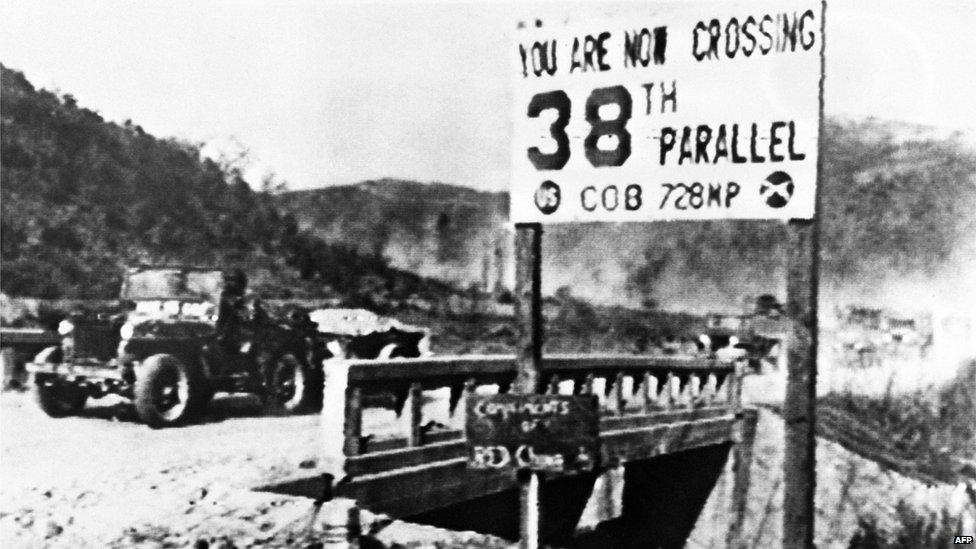
Just seven days before Japan's surrender at the end of that war, the Soviet Union took advantage of the changing fortunes and entered Korea. The USSR and the US later agreed to divide Korea at the 38th parallel, with the USSR in charge north of this line, and the US given jurisdiction over the south.
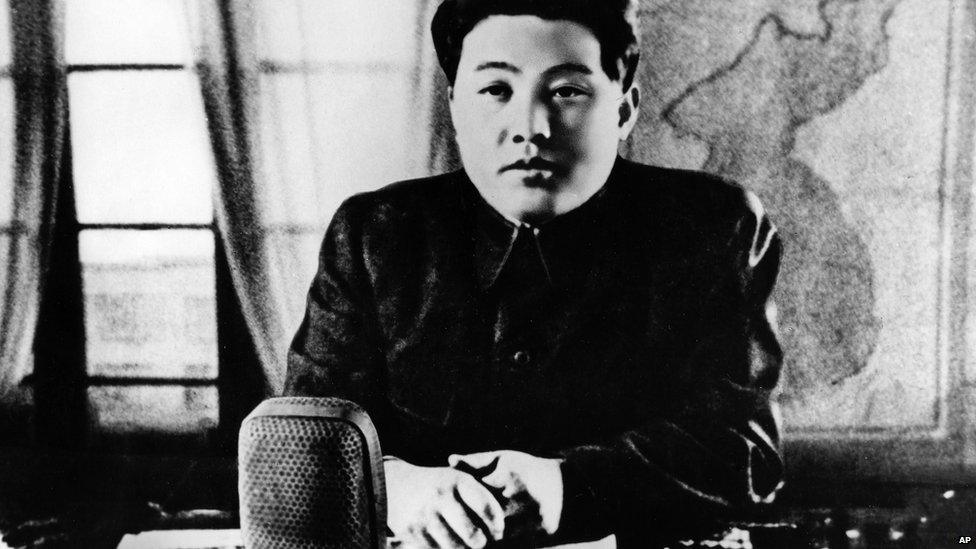
The Soviet Union established a communist dictatorship in the North under the leadership of Kim Il-sung, a former guerrilla leader.
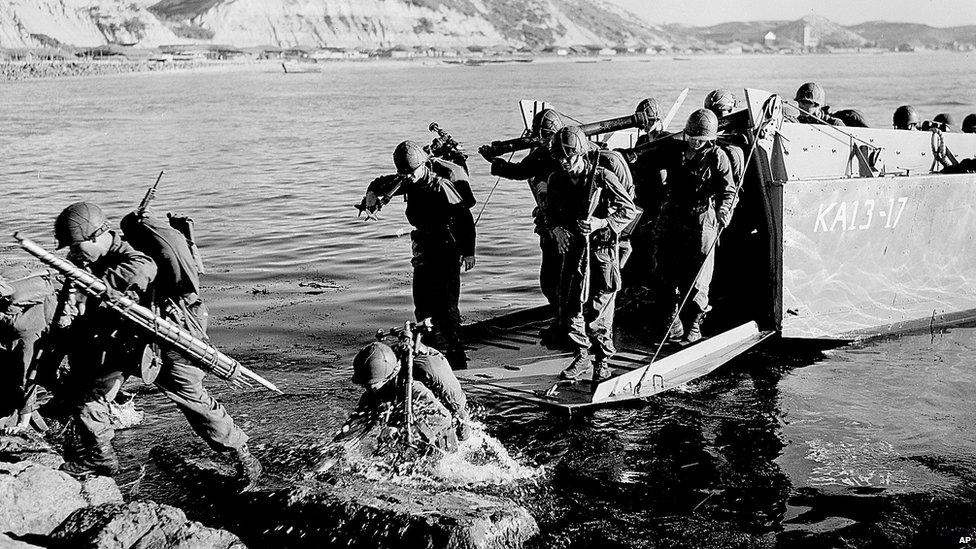
In the early hours of 25 June 1950 North Korea launched a surprise attack across the 38th parallel. US troops were hurriedly sent from bases in Japan. But they and their South Korean allies fared badly in the initial confrontation with the North.
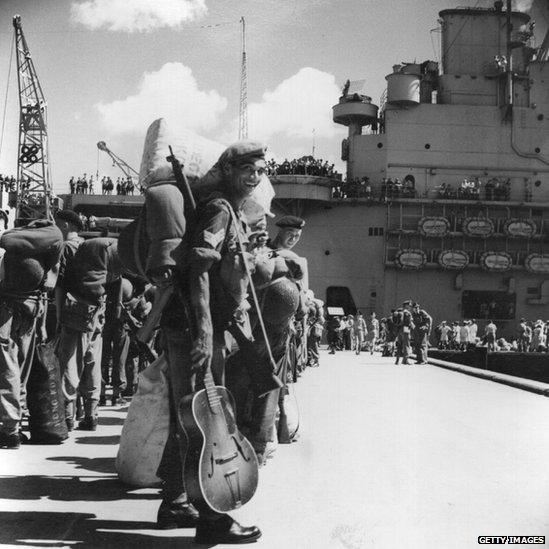
The Security Council passed a resolution which called on all members to help repel the invasion. Fourteen UN nations agreed to help, committing a force of some 300,000.
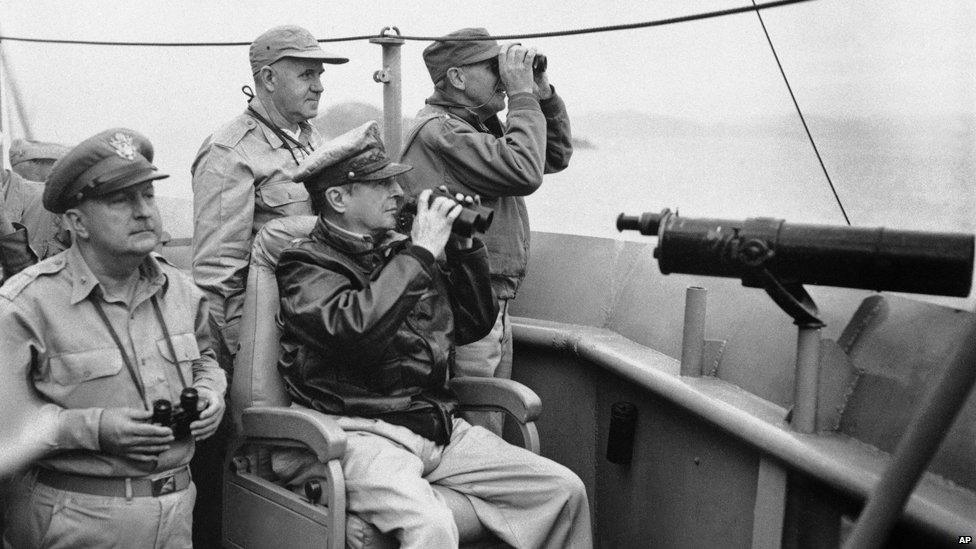
While the North's army was buffeting the Busan enclave, the head of UN forces in the conflict, US General Douglas MacArthur, prepared to reverse the course of the war. On 15 September 1950 he launched a daring, sea-borne assault on the western port city of Inchon (now Incheon).
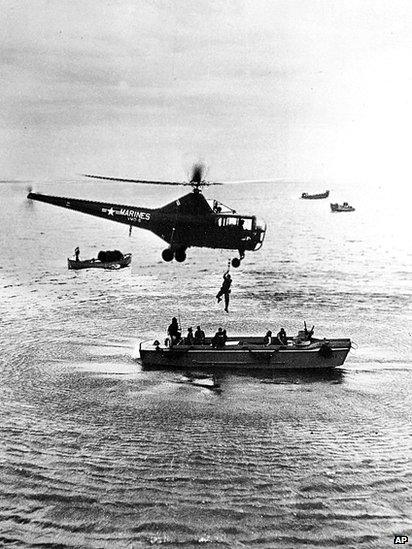
The goal of the Inchon landing, deep behind enemy lines, was to cut the North Koreans' supplies. The plan was risky because it meant braving unpredictable tides - only to face a fortified island in the harbour and a city that was occupied by strong North Korean forces. After preparatory bombardment, two battalions entered Inchon, beating down resistance but meeting no counter-attack.
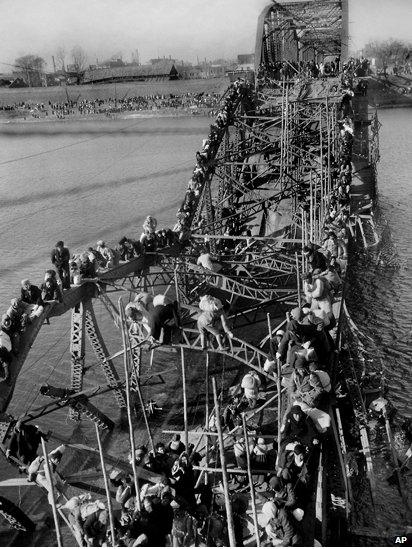
On 15 October MacArthur was reportedly confident of success in the offensive. However, just 10 days later, the Chinese army, which had been secretly massing at the border, made its first attack on the allies. As Chinese troops unleashed a renewed offensive, the allies were forced to withdraw south of Seoul in January 1951. Here refugees cross a bridge in Pyongyang as they head south.
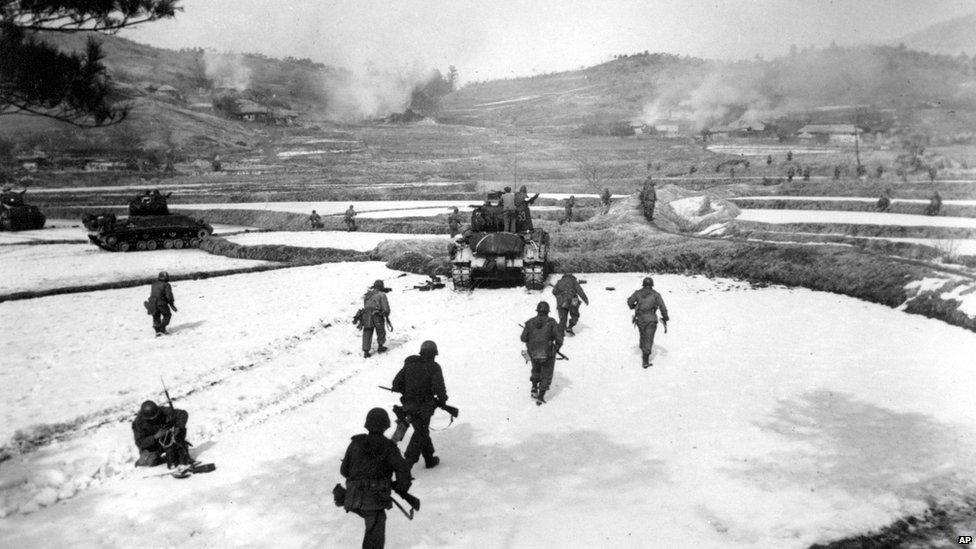
In the relatively open terrain of South Korea, the UN troops were better able to defend themselves. After a few more months of fighting, the front eventually stabilised in the area of the 38th parallel.
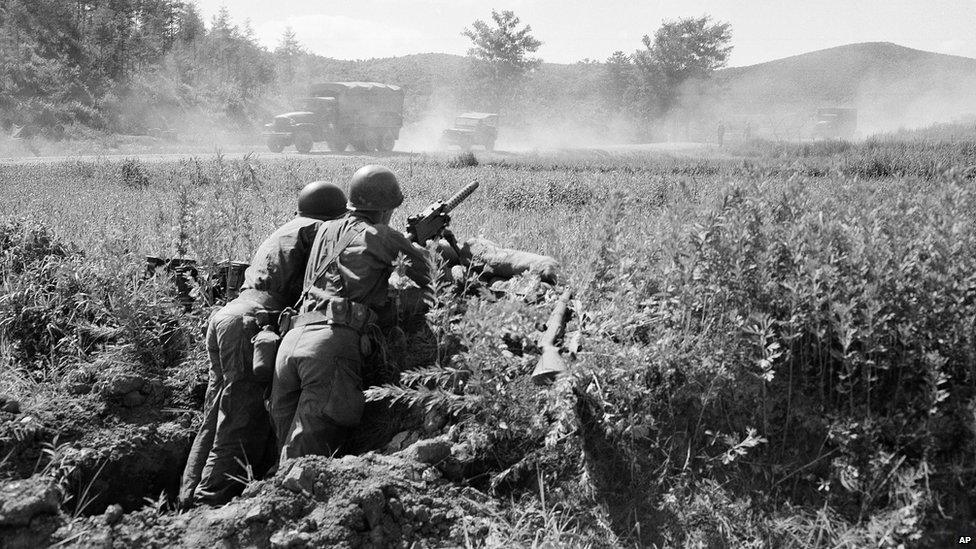
President Truman announced that the UN was now willing to sign a ceasefire. Truce talks began on 10 July 1951 but it was agreed that hostilities would continue. However, it took two years to agree the armistice terms which stalled continually, on issues such as the repatriation of prisoners, and the positioning of the armistice line.
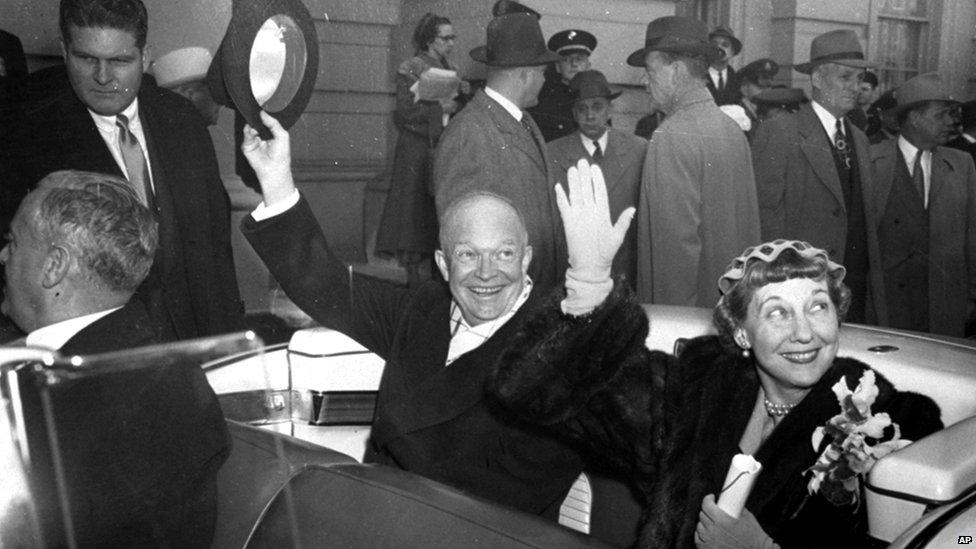
In January 1953, Dwight Eisenhower, who had been openly critical of the war, succeeded Truman as US president. Eisenhower informed the communist troops that he was willing to use nuclear weapons to end the conflict.
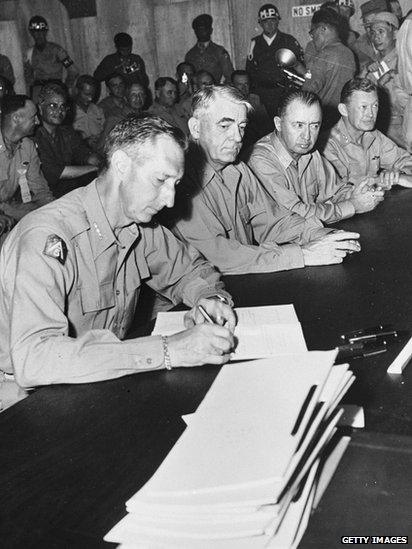
On 27 July 1953, an armistice was eventually signed, with the front line accepted as the new border between the two sides.
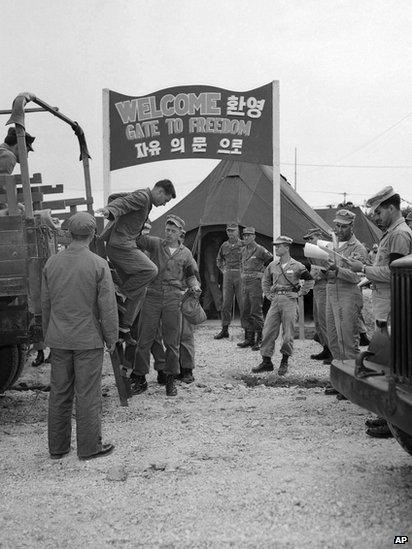
Operation Big Switch followed, when thousands of prisoners on either side were returned. The armistice was only ever intended to be temporary. The document said it was aimed at a ceasefire "until a final peaceful settlement is achieved".
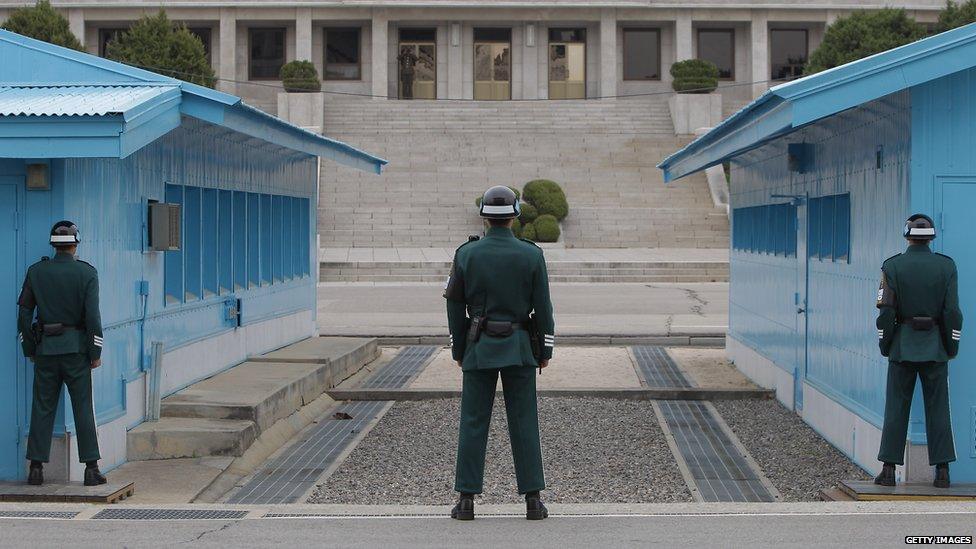
But that settlement never came. The Geneva Agreements in 1954, at which the Korean peninsula was discussed, failed to resolve the issue, and the Korean border has remained ever since.